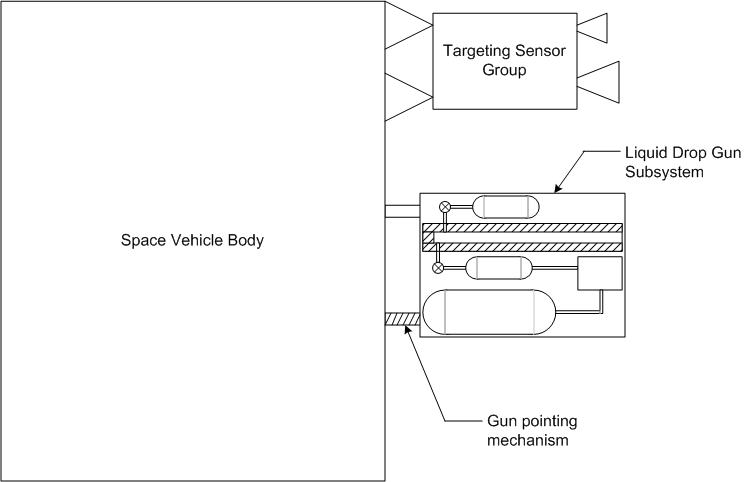
Figure 1: Compressed gas liquid drop gun schematic diagram. The liquid valve is electrically
controlled. The compressed gas valve is fast acting and electrically controlled for rapid pulse
firing.
Conventional metallic bullets or shot, no matter how small they might be, if they should miss their target, will remain in orbit and pose a hazard to friendly spacecraft. A suitable liquid, such as water, on the other hand, will vaporize in vacuum over time. Another advantage of using liquid projectiles is that the quantity, velocity, and size of droplets can be varied depending on the attack parameters desired. At closer ranges, larger drops in a narrow dispersion pattern will be required. At longer ranges, a larger number of smaller droplets may be more effective.

A small amount (one drop) of water (for instance) is let into the gun tube. Then, the compressed gas (helium, for example) valve is opened and the water drop accelerates down the tube and exits at the muzzle end. We can compute the muzzle velocity, V, for the water drop, as shown. We assume, for purposes of illustration, that the gun tube is one foot long and one half of an inch (0.042 ft.) in diameter. The density of water is 62 lbm/ft3. If we let just enough water in to the gun tube to make a spherical drop that has the same diameter as the tube (due to possible wetting adhesion properties of the tube interior, the drop will perhaps assume a cylindrical shape while in the tube (in zero gravity), and will assume a spherical shape when free flying. Larger amounts of water will lead to clusters of multiple drops being fired, with muzzle velocity reduced from that of the lighter single drops), the water drop mass will be 7.47 x 10-4 lbm = 2.32 x 10-5 slug.
The area of the gun bore is 1.38 x 10-3 ft2, and the pressure of the gas in psf is 5.76 x 106. The force applied to the drop from the gas will be 7,976 lbf. Acceleration of the drop will be 3.43 x 108 ft/s2. With constant acceleration (which it will be if the gas reservoir is sufficiently large), the formula for velocity is
V2 = 2 * a * d (equation 1)
Where a is the acceleration of the water drop and d is the distance the drop travels down the gun barrel. [2] Solving equation 1 for V gives
V = 2.62 x 104 ft/s (equation 2)
Such a velocity represents a significant orbital change. Hence, standoff distances are feasible. Higher velocities (for a given propellant gas pressure) can be achieved by using smaller diameter liquid drops or longer gun barrels.
For a 0.5 inch diameter water drop at 26,200 ft/s velocity, the kinetic energy will be 7,960 ft-lb. Such energies are capable of severely damaging spacecraft structures and sensors. Higher energies per droplet can be obtained when closing velocity or orbital velocity differences are taken into account.
It should be noted that with distant targets, evaporation will cool the droplet until it freezes solid. However, the energy of liquification is small compared to the kinetic energy, so whether the droplet is solid or liquid will make little difference in its damage potential on enemy spacecraft. [3] The frozen droplet will eventually evaporate (sublime) completely, leaving no hazard for friendly space vehicles. The duration of projectile droplets will depend on size, material, and the amount of exposure to sunlight. Other suitable materials besides water might include glycols, butanol (butyl alcohol), pentane, and other alcohols and hydrocarbons. Exothermic materials such as hydrazine will add heat of decomposition to the impact kinetic energy.
A concept sketch of a space weapon system is shown below in Figure 2:

A space weapon system utilizing the liquid drop gun would need to acquire targets using a suitable sensor system such that the orbital state vector parameters can be established with sufficient precision to compute a feasible intercept trajectory for the liquid drop projectiles. An onboard weapon fire control system will compute optimal liquid injection volume, gas pressure or volume (as controlled by the rapid valve), projectile firing pulse rate, number of pulses, and aim direction. It is possible to use spacecraft body pointing for aiming the gun, but higher battle agility may be achieved by a gun pointing mechanism as shown. Keeping the gun bore centerline near the space vehicle center of gravity will minimize any slewing tendency due to gun reaction force. For aiming and controlling the weapon, an algorithm will need to take sublimation rate of the projectiles and solar photon pressure on the projectiles into account. The physics of such computations is well known and rather straight-forward.
[1] George W. Bush, U.S. National Space Policy, the White House Office of Science and Technology, August 31, 2006.
[2] David Halliday and Robert Resnick, Fundamentals of Physics, John Wiley & Sons, Inc., 1974.
[3] Mythbusters, Episode 9: Chicken Gun, http://kwc.org/mythbusters/2004/02/mythbusters_chicken_gun.html
 Richard dot J dot Wagner at gmail dot com
Richard dot J dot Wagner at gmail dot com
index.html, this hand crafted HTML file was created October 27, 2010.
Last updated Novemeber 28, 2011, by
Rick Wagner.
Copyright © 2010-2011 by Rick Wagner, all rights reserved.